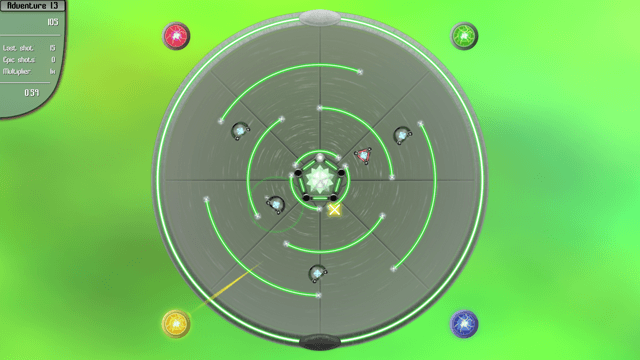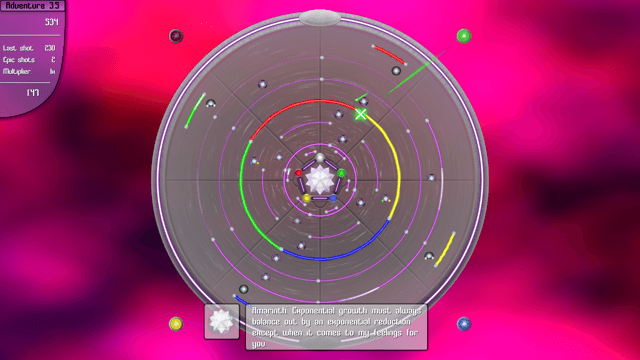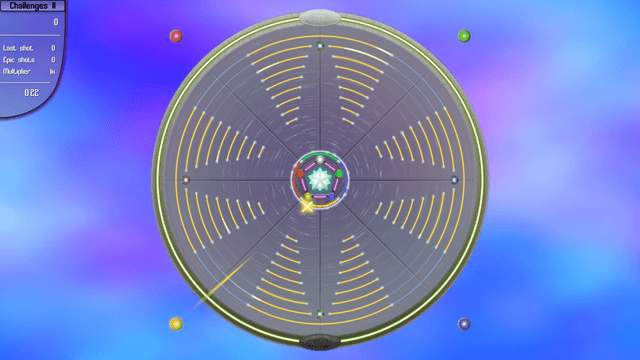- Wondering how to get Monopoly GO! free rolls? Well, you’ve come to the right place. In this guide, we provide you with a bunch of tips and tricks to get some free rolls for the hit new mobile game. We’ll …
Best Roblox Horror Games to Play Right Now – Updated Weekly
By Adele Wilson
Our Best Roblox Horror Games guide features the scariest and most creative experiences to play right now on the platform!The BEST Roblox Games of The Week – Games You Need To Play!
By Sho Roberts
Our feature shares our pick for the Best Roblox Games of the week! With our feature, we guarantee you'll find something new to play!Type Soul Clan Rarity Guide – All Legendary And Common Clans Listed!
By Nathan Ball
Wondering what your odds of rolling a particular Clan are? Wonder no more, with my handy Type Soul Clan Rarity guide.
Laserbrain Review
Contrary to the common (and really quite reasonable) assumption that computer circuits are logical, orderly constructs, Laserbrain takes the Tron-like view that there’s a war going on in our laptops and servers. Here, you play the part of a fledgling program sent out to assassinate a group of rogue ‘cores,’ who stand accused of being infected by independent thinking.

An intriguing blend of observational puzzling and reaction-based shooting.
Contrary to the common (and really quite reasonable) assumption that computer circuits are logical, orderly constructs, Laserbrain takes the Tron-like view that there’s a war going on in our laptops and servers. Here, you play the part of a fledgling program sent out to assassinate a group of rogue ‘cores,’ who stand accused of being infected by independent thinking.
Yes, it’s a pretty heavy handed analogy of real life philosophies and the dangers of an overly-controlling state. But never mind the hammy fiction – Laserbrain is a very interesting little puzzler in its own right.

The idea is to shoot a series of ‘cores’ situated at the centre of each level. You control four lasers, each stationed at a corner of the game field and each given a different colour (red, green, blue and yellow). You control one laser at a time by clicking on any of them with your mouse, then aiming as you would your desktop pointer.
The challenge comes from the fact that each core has erected its own unique pattern of defences that must be circumvented before you can get a clean shot at it. These take the form of numerous forms of force fields. Some can be shot through by a particular colour of laser (signified quite clearly by a shared colour), some fade in and out of view while others need to be deactivated by shooting the defence nodes that orbit at varying distances from the core. These too can often only be deactivated with a specific combination of laser hits.
Each defensive measure covers another, and each rotates clockwise or anticlockwise. Think of it as an onion-like approach to defence. If onion skins rotated and fired stun-rays at you (did I mention the cores could fight back?), that is.

As such, you need to pick your way through to the core, stripping back one layer of defence after another. Close observation (the key to success in Laserbrain) reveals that each mechanism has a small window of vulnerability, when gaps in the force field align to allow you a clean shot. It’s a game of timing, patience (spamming shots leads to penalties) and careful scrutiny.
Unfortunately, it does wear rather thin after a relatively brief time. While Laserbrain is a fresh concept that engages from the start, it soon runs out of surprises for you. The only way the game evolves is through ever more elaborate levels, which are often less fun than the simpler ones. You’ll encounter multi-layered stages with such small windows of opportunity that you’ll be left watching the screen for ages, waiting for a single gap to appear. When it does and you miss, it can be exasperating.
The aforementioned Adventure mode storyline, while adding extra impetus to the game, also serves as an unwelcome distraction. Each rogue core jabbers away about existence and free-choice via a text box at the bottom of the screen. Given that you’re graded on timing, and awarded bonus multipliers for consecutive successful shots, it can be rather counterproductive having to flick your eyes down all the time.

The other modes – Puzzle and Challenges – don’t suffer from such plot-based distractions, but they don’t offer anything massively different from the main Adventure mode either.
Laserbrain is an innovative puzzler that sucks you into its unusual world quickly, but doesn’t do enough to keep you there. If you have the patience to live with such repetitive and exacting gameplay, though, you could well learn to love it.

The good

The bad
More articles...
Monopoly GO! Free Rolls – Links For Free Dice
By Glen Fox
Wondering how to get Monopoly GO! free rolls? Well, you’ve come to the right place. In this guide, we provide you with a bunch of tips and tricks to get some free rolls for the hit new mobile game. We’ll …Best Roblox Horror Games to Play Right Now – Updated Weekly
By Adele Wilson
Our Best Roblox Horror Games guide features the scariest and most creative experiences to play right now on the platform!The BEST Roblox Games of The Week – Games You Need To Play!
By Sho Roberts
Our feature shares our pick for the Best Roblox Games of the week! With our feature, we guarantee you'll find something new to play!Type Soul Clan Rarity Guide – All Legendary And Common Clans Listed!
By Nathan Ball
Wondering what your odds of rolling a particular Clan are? Wonder no more, with my handy Type Soul Clan Rarity guide.







